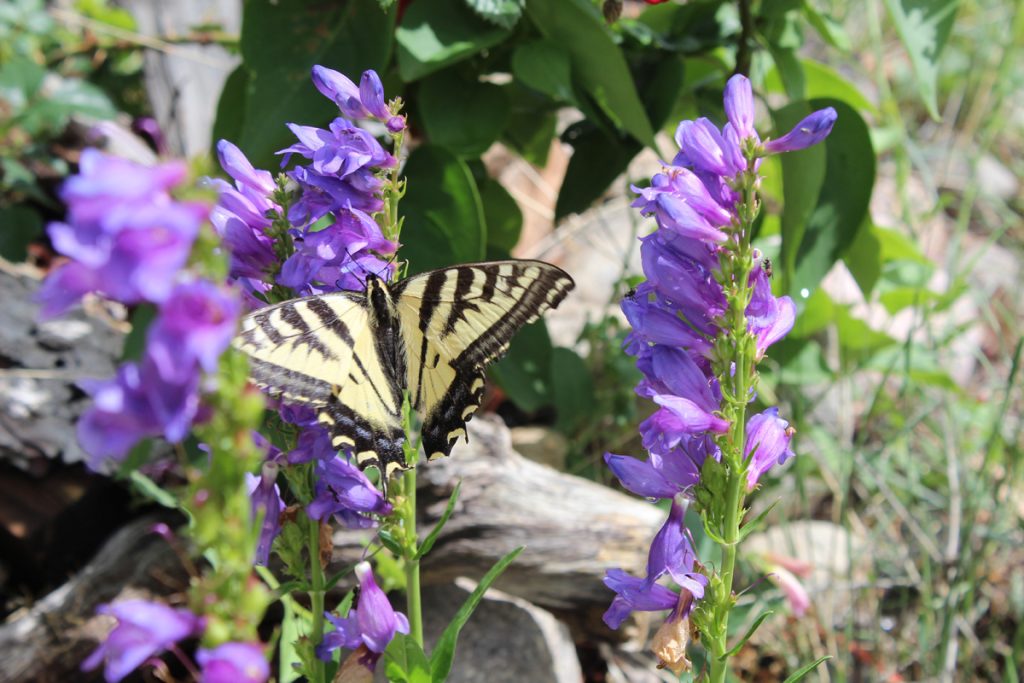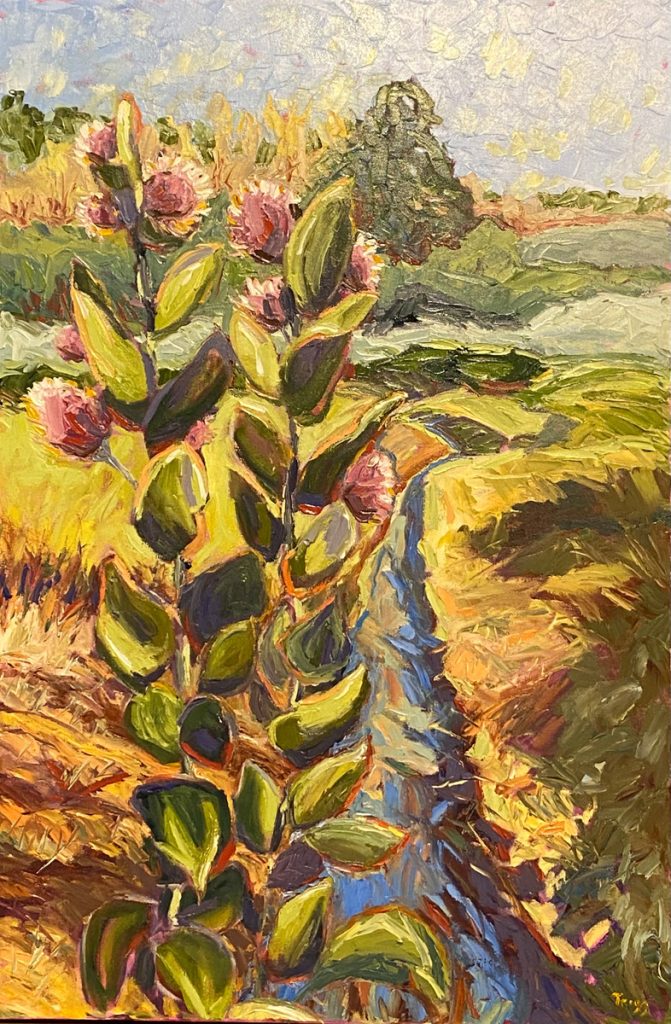
This was a good year for milkweed in our area, the butterflies love it. Pictured here is a yellow swallowtail butterfly, which looks similar to the Monarch.
The migratory monarch butterfly is the newest member of the endangered species list. Dwindling numbers accelerated by climate change, overdevelopment and pesticide use bring the iconic insect closer to extinction.
On the West Coast, Monarch populations dropped by 99.9 percent from roughly 10 million in the 1980s to fewer than 2,000 in 2021. On the east coast, the population decline is closer to 84 percent. On July 21, 2022, Monarchs were officially added to the International Union for Conservation of Nature’s Red List, where they are classified as endangered. The IUCN is a coalition of government, nonprofit and private organizations that work on conservation issues.
Monarch butterflies are one of the most beautiful and recognizable species, known for their large and brightly colored black and orange wings. These butterflies are native to North America, where they can be found in many different habitats, including forests, meadows, and gardens.
Every year, Monarch butterflies travel about 4,000 miles from Canada down into Mexico during the winter months in large populations called “flocks.” This long, difficult migration is just one reason that their population is dwindling. Recommended reading: “Flight Behavior: A Novel” by Barbara Kingsolver
Why Monarch Butterflies Are Endangered:
- Loss of Habitat. National Geographic says that monarch butterflies need three things to survive: their food source of milkweed plants, warm temperatures, and daylight. Their habitat has been dramatically shrinking in North America. Because of development, deforestation, and toxicity from herbicide, pesticide and other chemicals, milkweed plants are in steep decline. Without milkweed, their larva would not be able to develop into butterflies. This loss of habitat is most sharply pronounced due to deforestation in Mexico. At one time, all Monarchs would migrate to Mexico annually after their summer in southern Canada and the northern United States. Illegal logging in Mexico further threatens Monarch’s migratory cycle.
- Climate Change. As the Earth’s temperature increases, Monarchs are unable to migrate to colder climates as they have done in the past.
- Parasites and Diseases. Monarch butterflies are at mortal risk from parasites and diseases. According to National Geographic, the biggest danger to Monarchs is a tiny parasite called Ophryocystis elektroscirrha (OE), spread by infected butterflies. This parasite can cause deformation of their wings, affecting their ability to fly.
- Illegal Trade is a major threat. The World Wildlife Fund says that “millions of Monarchs are illegally collected every year and traded across borders for use in traditional medicines, as wedding decorations, or placed in children’s gardens as pets.
- UV Radiation harms Monarch Butterflies. “The thinning of the ozone layer allows more harmful UV radiation to reach the earth and damage the wings of Monarchs and their larvae,” says the National Geographic Society.
- Air Pollution. Rural populations in North America often burn crop residue, releasing smoke containing high amounts of ozone. When butterflies fly above urban areas, ozone enters through cracks in butterfly wings, increasing mortality rates.
- Pesticides. Some pesticides released into the environment may not directly affect Monarch butterflies, but they do play a significant role in population decline. According to the World Wildlife Fund, “When a pesticide is sprayed, a certain amount of the chemical enters the environment and persists for long periods of time. Plants and animals can absorb them through their system or leaves.” Monarchs drinking polluted water from milkweed plants are at risk.
Overall, loss of habitats, climate change, parasites and diseases, illegal trade, UV radiation, air pollution, and pesticides have contributed to the decline of Monarch Butterflies. If humans want to ensure that Monarch Butterflies survive for future generations to enjoy, we must take action and help restore these habitats by planting milkweed plants and reducing our carbon footprint.

How to Help Monarchs:
- Plant Milkweed. The main reason that these butterflies are endangered is because their habitat is being destroyed. By planting milkweed, you’re giving Monarchs a food source, a place to lay their eggs and reproduce. There are several different types of milkweed plants, be sure to check on which type the Monarch prefers before planting (see sidebar).
- Do Not Use Pesticides or Herbicides. Chemicals make their way into the food chain, causing serious health problems. They can only hurt the Monarch butterflies and also affect other wildlife, especially birds and bees.
- Join a Citizen Science Project. There are several organizations that track the Monarch butterfly population. By collecting data on their migration patterns and numbers, scientists can better understand why their population is dropping and find ways to protect them.
- Avoid Buying Genetically Modified Crops. Some crops, such as corn and soybeans, are genetically modified to resist herbicides. If you buy these types of crops, it could mean more herbicides being used in your area which will kill off any milkweed plants that are growing nearby.
- Educate Others about Monarchs. Most people don’t know about the Monarch butterfly’s endangered status. Please educate them by sharing this article on social media. If an organization you belong to works to protect Monarchs, ask them to increase their education efforts.
- Creating a Butterfly Garden at Home and Work will attract butterflies and allow friends, family, and employees to take an active role in saving these beautiful butterflies. Support all pollinators, including birds!
- Report any Illegal Activity. If you see someone illegally catching or selling Monarch butterflies, report it to the authorities. By doing this, you could help to protect their breeding grounds and stop the sale of these endangered creatures
- Volunteer at a Habitat Restoration Site. There are many local habitat restoration sites that need volunteers to help plant milkweed and other native plants. They often have information about Monarchs and what you can do to help them.
Donate to an Organization Working to Save the Monarchs. Some of these groups may be small and could use your help. If you’re interested in donating money, time, or resources, contact them to see how you can help.




